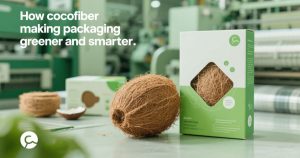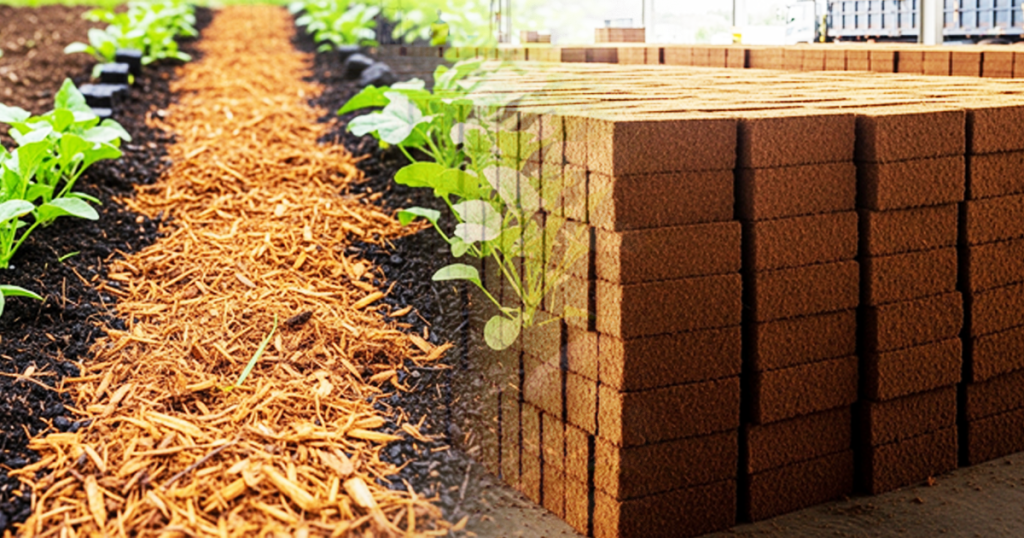A Researcher’s Perspective on Cocopeat’s Agricultural Potential
In the fast-evolving field of agritech, the convergence of sustainable materials and cutting-edge innovation is no longer optional it’s imperative. Cocopeat powder, a byproduct of coconut husks, has emerged as an organic substrate with extraordinary properties.
As a researcher in sustainable agriculture, I’ve spent years studying its physical, chemical, and biological characteristics. What began as an environmentally conscious alternative to peat moss is now redefining how we grow food in climate-vulnerable regions.
The integration of this natural material into smart agriculture systems is setting new benchmarks for soil health and yield optimization. Cocopeat powder is composed mainly of lignin and cellulose, giving it high water retention and porosity.
These characteristics make it an ideal growing medium, especially in areas with poor soil quality. When used in hydroponic and vertical farming setups, cocopeat not only reduces water usage but also supports root aeration, crucial for plant health.
This capability directly responds to the modern challenge of feeding an expanding population under increasingly volatile environmental conditions. Today’s agritech sector demands materials that are scalable, biodegradable, and economically viable.
Cocopeat fits the bill, and more importantly, it aligns with the principles of circular economy. Integrating cocopeat into automated irrigation systems, fertigation modules, and IoT-based monitoring platforms can enhance crop productivity sustainably.
Such synergy between nature and technology exemplifies the kind of innovation that modern agriculture needs.
Cocopeat’s Agronomic Advantages Backed by Science
Soil Conditioner and Microbial Booster
Our lab analysis and field trials consistently show that cocopeat improves soil structure and enhances microbial activity. When applied as a soil amendment, cocopeat promotes beneficial bacteria such as Azospirillum and Rhizobium.
These microbes aid in nitrogen fixation and phosphorus solubilization, contributing to better nutrient uptake. Unlike synthetic enhancers, cocopeat nourishes the soil without degrading its long-term fertility. This regenerative property makes it a sustainable input for both organic and integrated farming systems.
Cocopeat’s natural pH balance, typically ranging from 5.5 to 6.5, is ideal for most crops. It provides a buffered environment that minimizes the effects of acidification from chemical fertilizers. Furthermore, its cation exchange capacity enables it to retain essential nutrients like potassium and magnesium. These qualities help reduce nutrient leaching, especially in high-rainfall zones where conventional substrates fail.
Another breakthrough lies in sterilized cocopeat, which eliminates pathogens while preserving fibrous integrity. Our research confirms that UV-treated cocopeat effectively reduces soil-borne diseases such as Fusarium wilt and Pythium root rot. This characteristic is particularly beneficial for greenhouse cultivators who rely on disease-free media to maximize output.
Smart Farming Applications and Future Outlook
Data Driven Cultivation Meets Organic Substrates
Cocopeat’s integration into smart farming systems goes beyond conventional use as a growing medium. By embedding soil moisture and nutrient sensors directly into cocopeat beds, farmers can now achieve real-time monitoring and predictive analytics.
This convergence empowers growers with insights that lead to reduced input costs and higher efficiency. Our collaborative projects with agri-startups have demonstrated up to 30% higher yield in leafy greens cultivated with sensor-enabled cocopeat modules.
The lightweight nature of cocopeat also suits rooftop and urban farming, where load-bearing capacity is a concern. Moreover, when combined with automated drip systems, cocopeat optimizes water distribution, reducing consumption by as much as 50% compared to traditional soils. This water-smart characteristic makes it indispensable in arid and semi-arid farming zones, contributing to food security.
Looking ahead, research is underway to blend cocopeat with biochar and nanofertilizers to create next-gen substrates. These hybrid media can potentially deliver controlled nutrient release while sequestering carbon aligning agriculture with global climate goals. The future of farming, it seems, lies at the intersection of natural wisdom and engineered precision.







